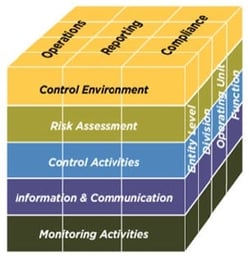And why it deserves attention from public and privately held companies While internal controls can never be failsafe or provide absolute assurance, they are still the best defense and protective measure against fraud that an organization can put into place. How To Uninstall Net Limiter Crack on this page. And although private organizations may not have the same level of requirements as public registrants related to internal controls, they should still pay attention to the Committee of Sponsoring Organizations (COSO) of the Treadway Commission’s new framework released in May.
The original COSO Internal Control – Integrated Framework (1992) has been the leading framework for designing, implementing and conducting internal control and assessing the effectiveness of internal control. The COSO framework has been used broadly with both private and public organizations and it was accepted by the SEC as a framework for attesting to internal control over financial reporting as required by the Sarbanes-Oxley Act of 2002 (SOX). But in the last twenty years, much has changed – business and operating environments have become increasingly complex, technologically driven and global. Additionally, stakeholders are more engaged than ever, demanding transparency and accountability. In May, COSO released their new integrated framework to appropriately reflect the changes that have occurred in the last two decades. And although the new framework is an improvement, the 1992 version will remain appropriate and relevant for a transition period that will end December 15, 2014.

Why is this important for private companies? Internal controls not only reduce the risk of loss, but help ensure that information is complete and accurate, financial statements are reliable and that an entity complies with laws and regulations. Public registrants have more stringent requirements related to internal controls and essentially must pay attention to the COSO framework. But fraud and risk of loss is not exclusive to large, public companies.
According to the ACFE’s Report to the Nations on Occupational Fraud and Abuse (2012 Global Fraud Study), “the typical organization loses 5 percent of its revenue to fraud each year.” and “Occupational fraud is a significant threat to small business.” In fact, they report the smallest organizations suffered the largest median losses. With fewer resources, the losses experienced by small businesses tend to have a greater impact than they would in larger organizations. And smaller organizations typically employ fewer and less effective anti-fraud controls than their larger counterparts, which increases their vulnerability. Keeping up with this ever-changing environment is one of the best ways to protect an organization. As such, internal controls should be a process of continuous improvement by organizations large and small.
Implementing and layering in the new framework is an excellent opportunity to improve a functioning system or fix a broken or insufficient system of internal controls. Further, while COSO is not a standard setter and does not have the power to require an organization to switch to the new framework, organizations might have some difficulty explaining to their stakeholders why they are not using the new framework. Why the framework had to change Competitive pressures, advances in technology and regulatory scrutiny have contributed to increasing expectations for providing relevant information immediately. Additionally, investors, owners, regulators and other users continue to demand more and quality reporting. Book Of Strategic Management Free Download.
COSO 2013 Framework. Updated Internal Control –Integrated Framework. Under the 2013 COSO Framework, effective internal control requires the following. UPDATED COSO INTEGRATED FRAMEWORK FAQs. Of the 2013 Framework is available free of charge. The five components of internal control. The 2013 Framework.